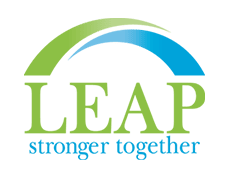What You Measure is What You Get: Five Innovation Metrics That Work
Organizations can make ideation and progress actionable by measuring what they already have before creating something new.
Innovation is an orientation toward progress and new ideas. But with a concept as abstract as innovation, working to improve your business’ performance can seem daunting. Tracking metrics help break down what a company and its employees prioritize and carry out each day, allowing leaders to make educated decisions about the direction of and changes to their business.
What you measure is what you get. It’s impossible to improve what you don’t know, and it’s easy to forget what you don’t measure. Metrics allow leadership to develop a baseline for performance and can be the first step to increasing innovation. These metrics move your business forward — and in the right direction.
When designing and measuring performance, it’s important to start simply. Measuring too many business components at once will distract and overwhelm your team. Start with a few metrics, and build your goals off those.
These metrics break down innovation into measurable, actionable areas of improvement — and they’re a great place to start developing your own personalized metrics.
Processes and structure
Processes and structure are the whats and hows of your organization. They include what resources are allocated and the formalized processes for ideation. Organizational hierarchies and channels of communication are included in these metrics as well.
Processes and structure metrics could measure how much time your team spends on innovation vs. operations, and evaluate if there is a formalized process to generate innovative ideas. Focusing on resource allocation, you could ask how much money is dedicated to innovation and ideation within your organization.
Strategy
Innovation should be built into the high-level strategy of your organization — progress won’t happen without planned objectives and direction. It’s essential to link your high-level innovation strategy to operations and to ensure the strategy is understood at all levels of your organization. When you take time to build out an innovation strategy, the roadmap will guide your metrics and goals.
When developing strategy metrics, you could measure how much time management spends on strategic innovation or how many executives have received innovation training. You could evaluate your own innovation strategy, measuring priorities and determining if they are updated and relevant.
Culture
A culture of innovation supports and encourages ideation and experimentation. Innovation processes are clearly defined, and new ideas come from all levels of the organization. Organizational culture is studied through a variety of lenses. The attraction-selection-attrition (ASA) model maintains that employees are attracted to and select organizations whose values align with their own. Therefore, the people make the place. Organizational culture can be categorized based on industry, company age or risk factors, so metrics should be tailored to your specific organization and needs. These metrics should address innovation culture within new hires as well as existing employees.
Culture metrics could measure how much time is dedicated to innovation or how often innovation is explicitly discussed. You could evaluate whether employees are hired based on innovation interest or experience. Metrics could include what percentage of new ideas and initiatives come directly from employees or if employees even directly engage in ideation efforts.
Professional development
Professional development is key to innovation efforts as it ensures employees at all levels of your organization are dedicated to new ideas, learning and maintaining a growth mindset. Prioritizing professional development will help you develop a companywide culture of constant improvement, translating to an affinity for innovation.
These metrics could measure the percentage of employees trained in innovation methodologies or evaluate employee innovation skills. You could measure how many professional development opportunities are available to employees, how often these opportunities are used and if new competencies are being deliberately developed. Similarly, you could evaluate the number and frequency of challenges provided to employees.
The bottom line
Performance indicators are flexible and should be personalized to fit your company’s needs and priorities. Developing and using metrics is an ongoing process, and adjustment will be needed as your goals shift and your innovation strategies evolve. Remember to start simply, find metrics that work for your business and continue from there.
Do you want to learn more about resilience and innovation in business practices? PROTO Accelerator is a startup accelerator that brings innovation to corporations looking to increase efficiencies, decrease costs and add value within their industry. The program is designed to attract creative minds from across the globe who are ready to test revolutionary business models.
To learn more about PROTO Accelerator, visit http://www.protoaccelerator.com/ or email tony@purelansing.com.
Category: Uncategorized


